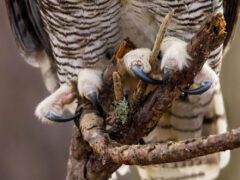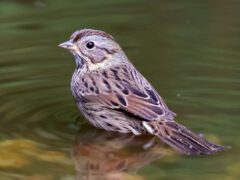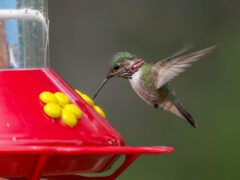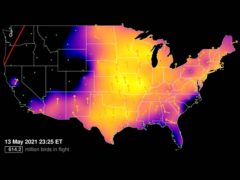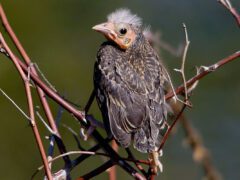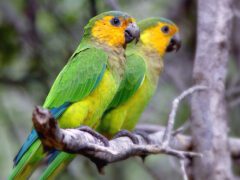American Bittern Photo Gallery
Adult/immature
Medium-sized heron with a long, thick neck and long, pointed bill. Well camouflaged: buffy and brown, with vertical brown stripes on its neck.
© Jason Dain / Macaulay LibraryNova Scotia, December 26, 2018Adult
Medium-sized heron with a long, thick neck and long, pointed bill. Note long, black patch that extends from below the eye down the side of the neck.
© Luke Seitz / Macaulay LibraryMaine, June 13, 2015Adult
Produces a distinctive "pump-er-lunk" call by repeatedly inflating their throat. These low-pitched calls allow American Bitterns to communicate effectively even when blocked by dense vegetation.
© Eric Liner / Macaulay LibraryNew York, May 01, 2006Not all videos have soundAdult
In flight note dark flight feathers, pale coverts, and hunchbacked look.
© Nathan Dubrow / Macaulay LibraryMassachusetts, December 01, 2017Adult
Tucks head into a hunch and slowly lifts its feet with toes spread as it walks slowly through open areas in wetlands.
© Ian Davies / Macaulay LibraryMassachusetts, April 28, 2013Adults
Almost exclusively occupies freshwater wetlands with tall vegetation year-round. Rarely occupies coastal tidal marshes or coastal areas with low vegetation.
© Eric Liner / Macaulay LibraryNew York, May 01, 2006Not all videos have soundAdult
Note white throat and long, black patch of feathers that extends from below the eye down the side of the neck.
© Luke Seitz / Macaulay LibraryMaine, June 13, 2015Habitat
Breeds mainly in freshwater wetlands with tall vegetation.
© Zak Pohlen / Macaulay LibraryAlaska, June 30, 2020Adult/immature
Flying style is similar to most other herons, with the neck retracted and legs trailing out behind, but American Bitterns have hurried and somewhat ungraceful wingbeats.
© Eric Liner / Macaulay LibraryNew York, May 01, 2006Not all videos have soundAdult/immature
When approached by potential predators, American Bitterns attempt to camouflage themselves by pointing their bill upwards, compressing their body feathers, and remaining as still as the surrounding vegetation.
© Jay McGowan / Macaulay LibraryNew York, April 25, 2015Not all videos have soundCompare with Similar Species
Click on an image to compare
Species in This Family
Herons, Egrets, and Bitterns(Order: Pelecaniformes, Family: Ardeidae)











